The Conversation Beneath Tunnel Fashion No One Ever Mentions
Robyn Mowatt, Essence fashion editor, writes a guest essay on the history of athletes and their outfits
A goal of mine in expanding this newsletter is to bring in new voices and perspectives of experts who I admire. Particularly people who ardently believe in the power of fashion as much as I do. A huge part of my work with TSS lies in not only reporting on Taylor’s fashion exacts, but contextualizing them within the “lore” of her world with thoughtful commentary that analyzes her aesthetic choices. Fashion is a communication tool. Taylor uses this tool as often and as intentionally as she does her pen. Her music may be what her story sounds like, but her fashion is what she wants it to look like. As sensorial art forms, both of these mediums can anchor you in a time and a place. It’s why you can look at a photo of Taylor and pin it to a specific moment in her almost 20 year long career — a feat that is far from accidental. Much like her music, Taylor’s fashion becomes a richer text when it’s contextualized. Fashion is that powerful.
When Taylor first stepped out in Arrowhead Stadium back in September 2023, she began exploring a new-to-her genre of fashion. One devised to work within the context of the new world she was entering secondhand through her newly found relationship. A genre of fashion explored, popularized, and iconified long before her by Black athletes.
The following is a guest essay by Robyn Mowatt. I’ve admired Robyn’s work for awhile now. Her reporting for Essence covers the Venn diagram where fashion meets athletics and her writing on this intersection is done so with such precision and passion. The intricate nature of her writing has made her a niche expert with bylines in just about every fashion publication you can imagine. Her knowledge and love of an archival moment runs deep and I love seeing the runways she hits during every New York Fashion Week. If you’re curious about her fashion background she’s held roles at Racked, The Cut, and Elle. She’s also been featured in the CFDA, Who What Wear, InStyle, AfroTech and has appeared on two episodes of the hip-hop podcast Breaking Atoms dissecting Jay-Z’s Reasonable Doubt. I couldn’t resist sliding into her DMs to tap her robust experience and knowledge on the intersection of this topic covering some of the most important and pivotal players whose fashion literally changed the game.
📧 Email: This is going to get cut off in your inbox! This particular newsletter is best to view in app or in browser.
💟 Engagement Matters: If you’re not currently in a position to become a paid subscriber, please consider becoming a free subscriber + hitting the ‘🤍’ heart button on this post. Any/all engagement helps creators tremendously!
📝 Guest Contributors: I’d like to thank Robyn for her time in writing this essay and to you for your support of the TSS newsletter, which makes it possible for me to pay contributors.
By Robyn Mowatt
In recent years there has been a laser focus on athletic style and the boundaries many of them are experimenting with. Athletes and their prowess on the field is distinct, but with the combination of statement pieces incorporated into their game day ensembles these players have shook up the cultural lexicon. What makes this phenomenon most interesting is the intersection that many Black athletes sit at: they are pop culture figures who’ve forced the fashion industry to pay attention to them. They’ve forced the hands of global houses–this stronghold has created perhaps some of the most compelling and daring outfits to ever exist in sports, especially in the National Football League. The level of experimentation and play is not something to ignore, it’s what makes these singular moments impactful. Alongside stylists, Black athletes and their peers are dismantling preconceived notions one outfit at a time. What is most significant about the hyper-fixation and marriage between sports and fashion is that through clothing, athletes including Tyrod Taylor and O’Dell Beckham Jr. are challenging connotations linked with athletic style.
Black athletes and their peers are dismantling preconceived notions one outfit at a time.
For Black athletes, being able to be a part of the fashion conversation on their own terms is refreshing. Especially due to the global fashion industry being notoriously described as gatekept. With the assistance of stylists such as Kesha McLeod, Dex Robinson, and Amadi Brooks star athletes are offered the opportunity to wear intentional outfits. Through their work with their clients of the past and present they’ve solidified themselves as figures who are enmeshed with the ongoing moments we’re experiencing. And furthermore, they’ve been able to springboard their names into stylish recognition.
In particular, McLeod has worked extensively with Serena Williams, and she’s breathed life into her public appearances. McLeod once told The Cut that her styling signature laid storytelling. “I love to create a narrative and create a story line for my clients and what it looks like. Just give me a start to your imagination and I can build it into a motion picture,” she said.
Brooks has styled WNBA powerhouse A’ja Wilson–her work has led to Wilson experiencing major press coverage. Dex Robinson collaborates with Tyrod Taylor and others, and his work is aesthetically stimulating. Each of these stylists are skilled storytellers–their work showcases this notion explicitly.
These stylists are skilled storytellers–their work showcases this notion explicitly.
With a representative who is largely focused on the bread and butter of creating outfits, a stylist, athletes are piecing together their legacies. While doing so, they’re also widening their opportunities to monetize their likeness. Fostering relationships, specifically for Black athletes with major houses, can lead to ambassador appointments, paid sponsorships, and opportunities that better equip them to become business moguls in their own rite.
Separately, it’s undeniable that the heavily followed social media pages showcasing athletes and their clothing choices have added to the level of excitement surrounding their decision-making. Since many of us are constantly on our phones, Instagram accounts like @blitzfitz, @wnbatunnel, and @leaguefits point out trending brands and what is being worn swiftly.
On the previously mentioned platforms you might see a NBA, NFL, or WNBA player wearing an emerging brand or a high-end item. Credits are typically added, and this level of snooping and accreditation is sleuth-like in its approach. Aside from the level of dedication it takes to run a page that points out style decisions for those who are the account holders, these pages and their level of expertise is compelling. Each page highlights how interested fans are in engaging with fashion in this manner. You only need to read the comments to see positive and negative chatter about game day attire.
One’s fashion choices are often influenced by those who came before them. Decades ago, Wilt Chamberlain was associated with being fashionable. As a sharply dressed figure he was an innovator, Chamberlain often donned double-breasted jackets and suits. Since this was the ‘70s he is largely associated with a shift in style within the National Basketball Association. His stylish nature set a precedent that is currently still being followed: wearing pieces that make one feel the most confident. In modern sports, that encompasses high-end brands that aren’t shoppable for many Americans due to their price point. Think exclusive items that are accessible to only a select few who hire stylists and personal shoppers to purchase their designer items.
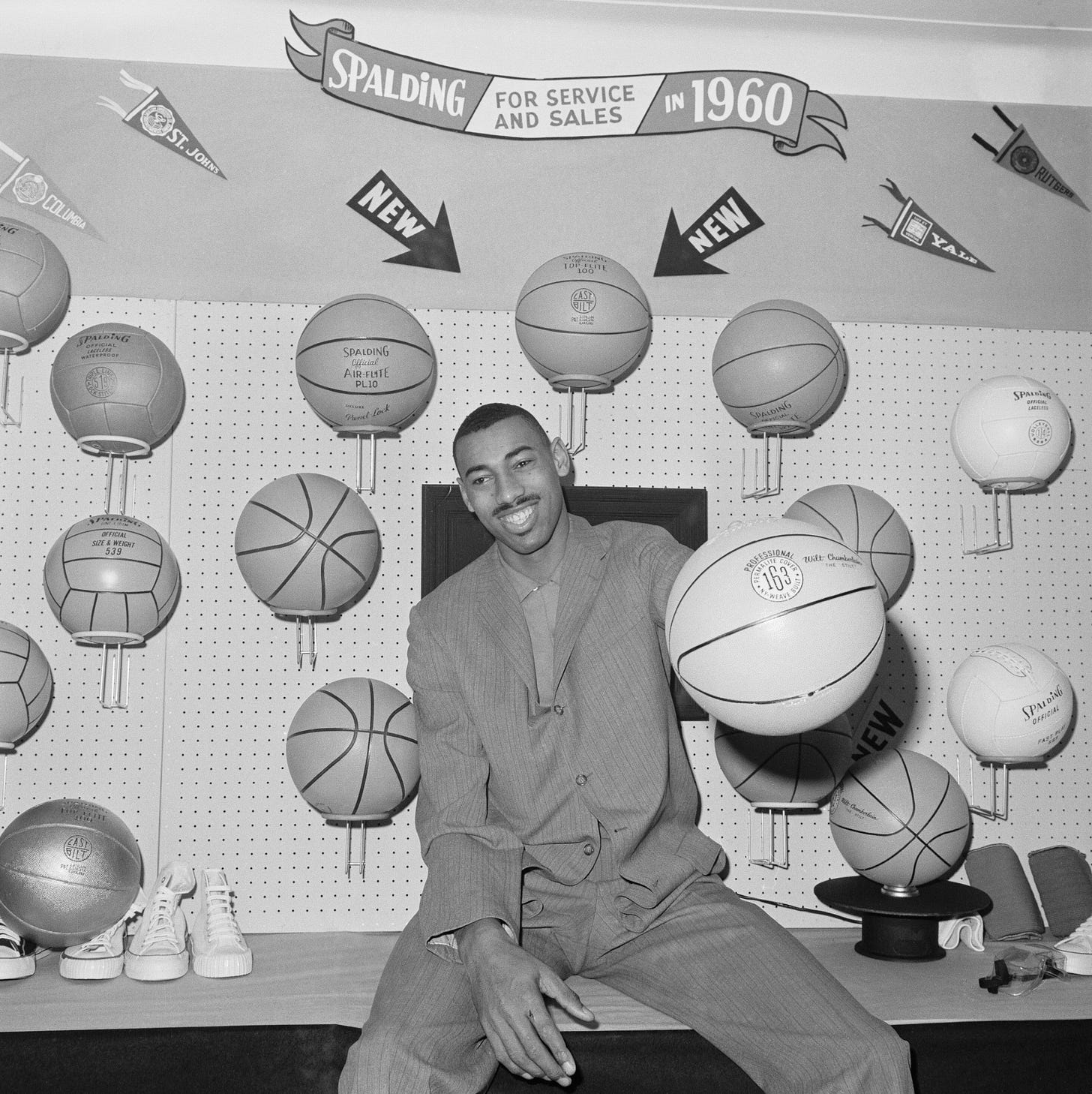
An equally important figure? Allen Iverson who is synonymous with tunnel fashion. Iverson, who was inducted into the Basketball Hall of Fame in 2016 was a pioneer. He’d often show up to games for the Philadelphia 76ers dressed in garb that spoke to the lauded lifestyle he was living: lavish chains, perfectly cornrowed hair, and the latest streetwear. Fitted baseball hats were regularly a part of his game-day style too. There was a cool factor that oozed effortlessly in archival shots of A.I. His legendary status paved the way for the eras that followed his time in the league.
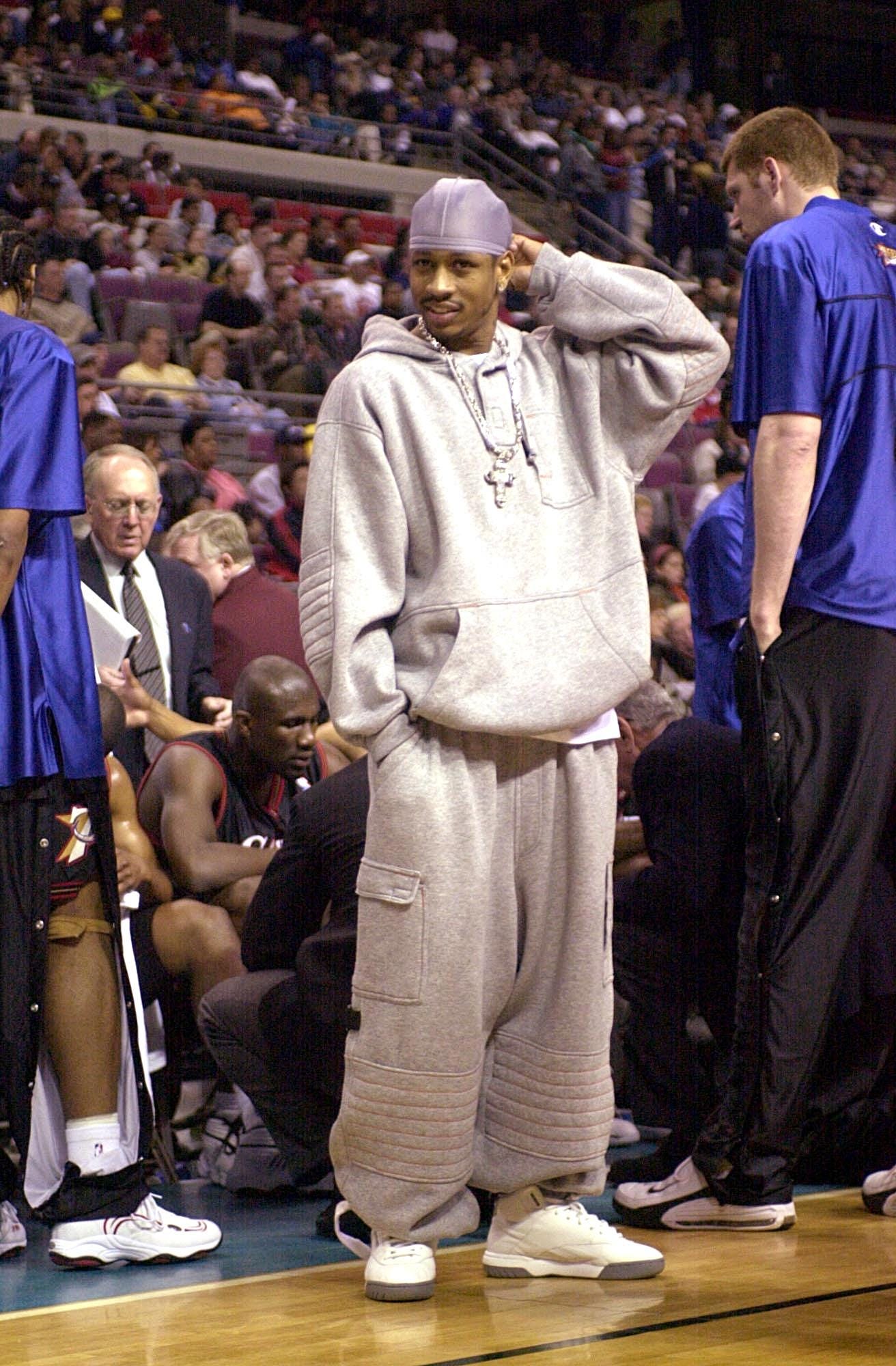
There was once an era in the NBA when LeBron James wore a matching twill suit by Thom Browne alongside his former teammates Jordan Clarkson and J.R. Smith. The customized suits worn during playoffs in 2018 were a hard reset for the NBA. The outfits ushered in an expressive era that set a precedent for tunnel outfits. While doing so, it also solidified that players were willing to tap in with major houses to create memorable moments.
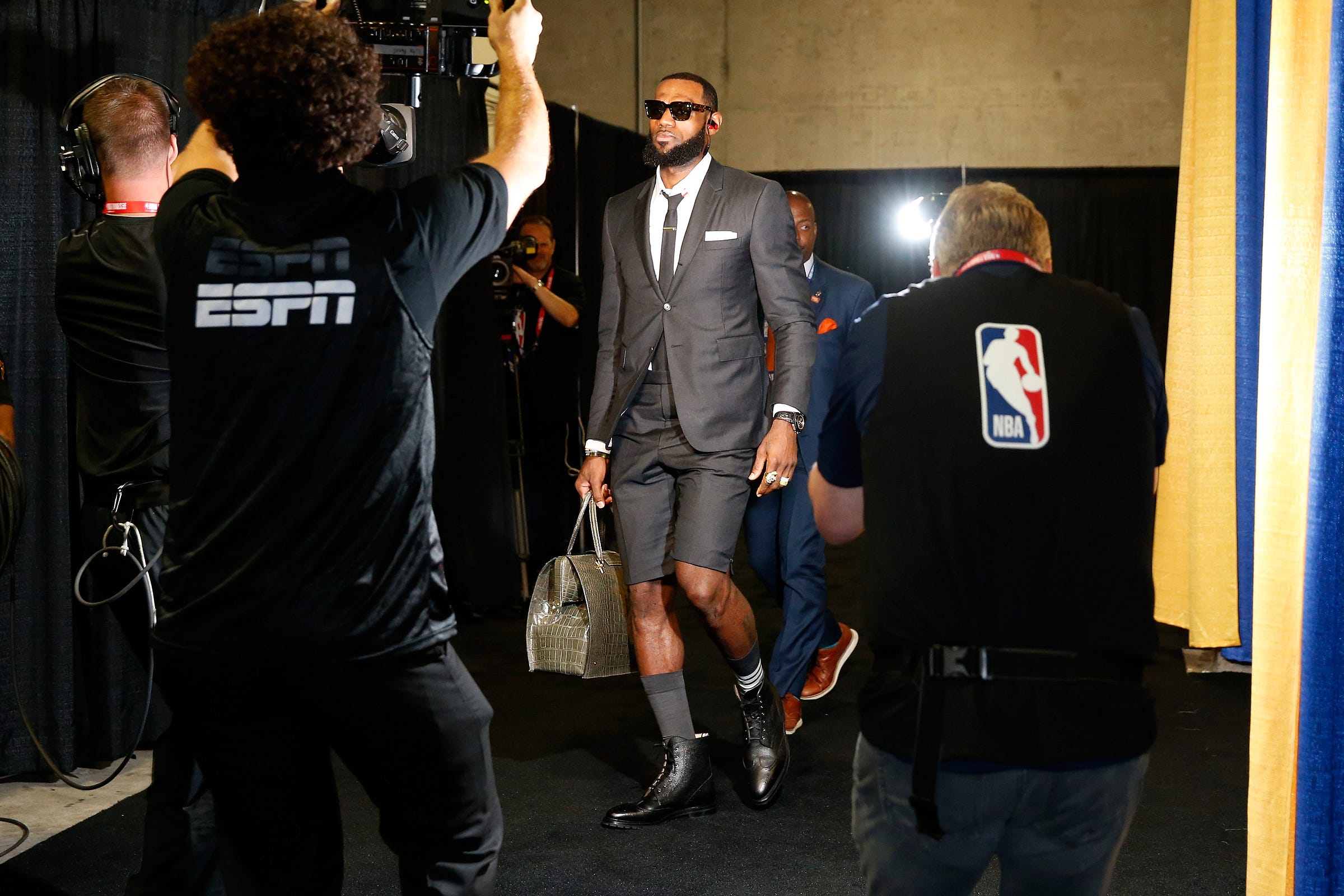
Fast forward to the present LeBron, who was dabbling in high fashion years ago, is now a full fledged fashion gent. Many of his splashy outfits ahead of games feature Louis Vuitton in some capacity. Last year, the French brand rolled out a campaign starring the basketball legend.
Presently in the NFL, Tyrod Taylor annihilates many players within the league due to his innovative collaborations with his stylist Dex Robinson. Taylor’s looks ahead of games often feature thrilling trousers and polished statement outerwear. A part of the appeal is how each item the player wears is expertly tailored. Bottega Veneta is one brand that Taylor appears to have an affinity for. He also notably embraces tones including salmon pink and lime green. Between Robinson and Taylor, their relationship as stylist and client has transcended into a fashion business venture of their own. In July 2023, the duo launched their own fashion brand titled Diallo — which releases Americana-inspired staples the pair dub as “the new American luxury.” Fellow players and celebrities have been spotted in Diallo since the brand’s launch.
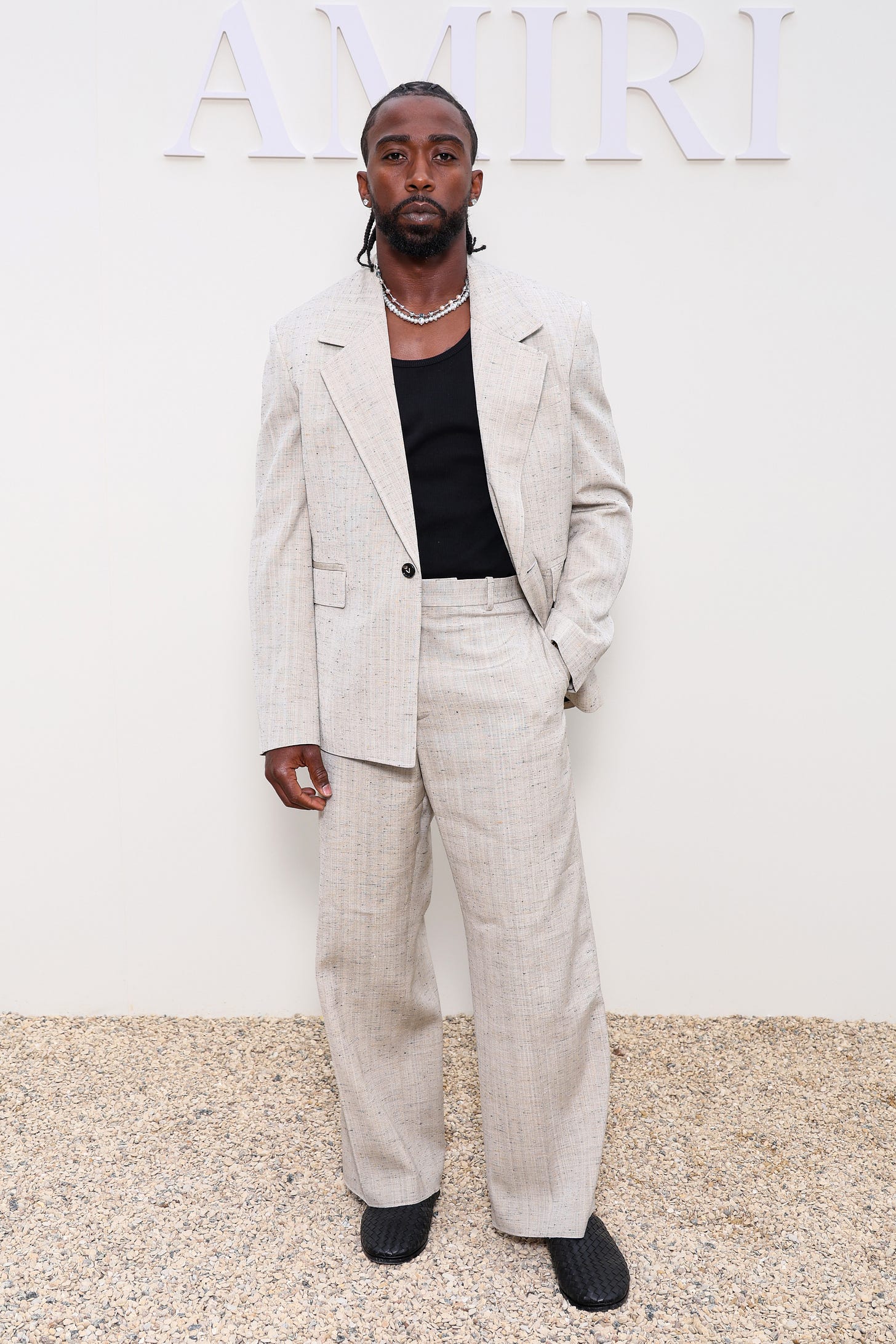
WNBA player A’ja Wilson has also skyrocketed into the fashion lexicon due to her stylist Amadi Brooks’ fierce dedication. Thanks to Brooks, Wilson has pulled off many pivotal looks. A particularly memorable one includes a fiery red Sergio Hudson suit she wore during the 2024 WNBA Semi Finals. The jacket featured a cheeky detail that alluded to Hudson’s affinity for accentuating women’s curves (a nod to vintage bustiers).
Their creative partnership has shed a unique light on women in sports. Though she once embraced T-shirts and two-piece sets she’s in a grown-up era currently. Her previous looks that were once largely streetwear-centric have matured over the years. Wilson and Brooks have honed in on how they’d like the basketball star to be perceived: as someone who wants to be taken seriously on and off the court. Together they make this clear through precise tunnel moments.
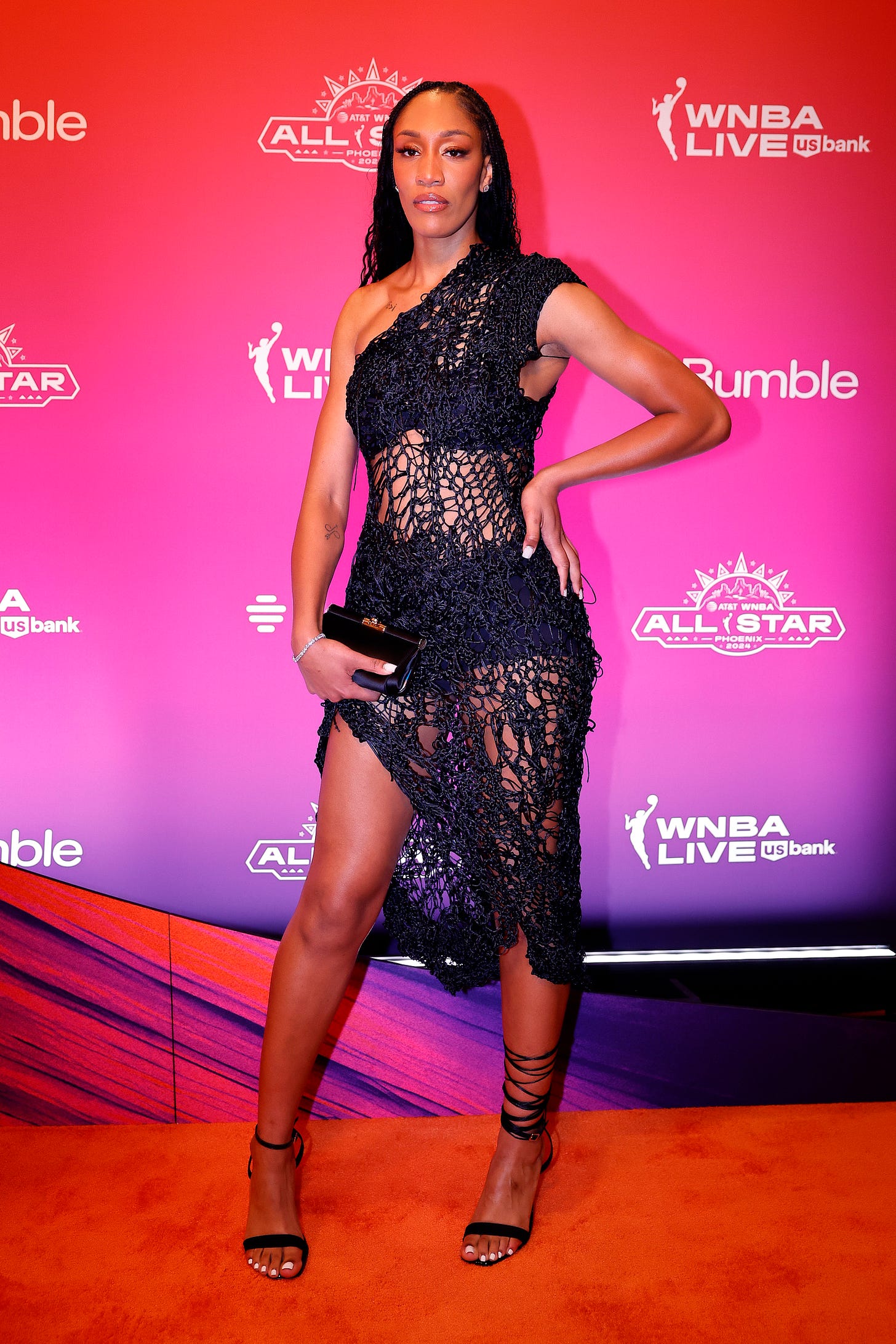
Steffon Diggs is a figure who has risen expeditiously into fashion. His level of focus and passion for showcasing his eccentricity shines through on each post on his Instagram account. Structured jackets and a genderless approach are the codes Diggs swears by.
On Black figures fashion is more than clothes. And for athletes it’s also larger than what one might imagine. Through self-expression and inventive garments players have garnered momentum. Tunnel outfits provide a means for interfering with ideals that might’ve stifled opportunities for advancement in one’s life–especially for those who are seeking to market themselves as skilled individuals outside of the sport they are dedicated to currently.
My sincere thanks to Robyn for her words, time, and expertise.
Robyn Mowatt is a senior editor and writer. Her work covers the intricacies of Black culture, designers of color, music, and entertainment. Mowatt has written for Elle, Harper’s Bazaar, Rolling Stone, Vogue, NPR, The Cut, Nylon, Byrdie, Essence, and various other web publications. She is the former associate editor at Hypebae where she developed the site's culture content and focused on emerging designers, music, and Black Hollywood. Mowatt also was previously a staff writer and contributing editor at Okayplayer where she carved out a lane for herself by writing sharp editorial packages, profiles, and features. At the music-centric platform, she breathed life into their coverage of R&B, fashion, entertainment, and women in hip-hop.












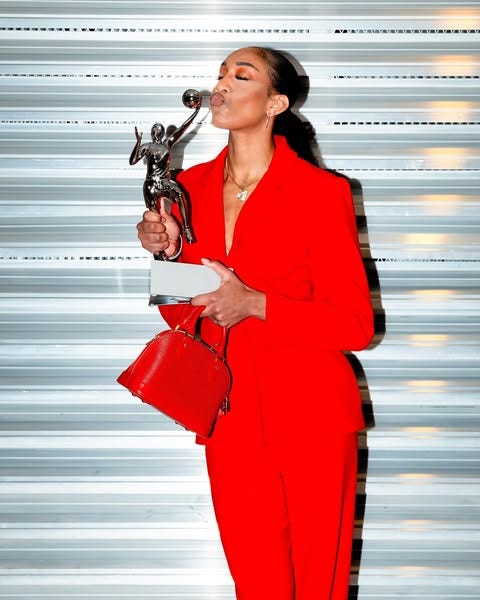



I vividly remember talking about AI’s swagger in middle school but had no idea Wilt helped to usher in fashion for the NBA back then.
Great read! Love the Iverson inclusion!!!